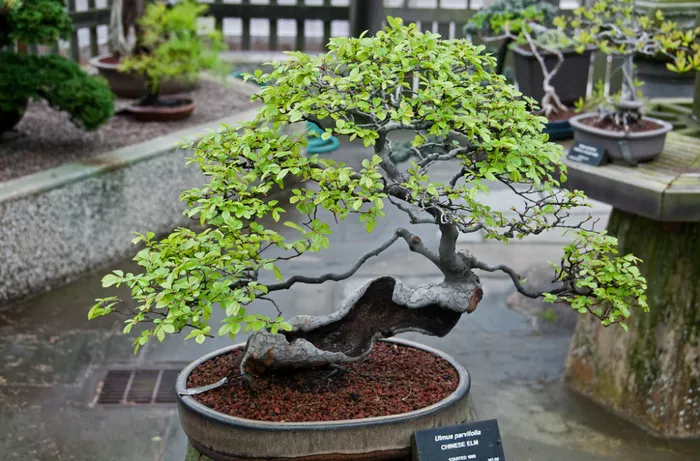Bonsai, with its ancient roots in Eastern culture, has captivated enthusiasts around the globe for centuries. The art of cultivating miniature trees has evolved into a rich tradition, offering a unique blend of horticulture, design, and philosophy. In this article, we embark on a journey through the diverse world of bonsai, delving into its history, styles, popular tree varieties, and essential care techniques.
An Overview to Bonsai
1. What is Bonsai?
Bonsai, originating from the Japanese term “bon-sai” which translates to “planted in a container,” is the practice of cultivating miniature trees in shallow containers. This art form aims to replicate the shape and scale of full-sized trees in nature, emphasizing harmony, balance, and proportion.
2. The Art and History of Bonsai
The history of bonsai traces back over a thousand years to ancient China, where miniature trees were grown in pots as symbols of wealth and prestige. Over time, this practice spread to Japan, where it evolved into a highly refined art form deeply rooted in Zen Buddhism and the principles of harmony with nature.
3. Basic Bonsai Styles
Bonsai trees are classified into various styles based on their trunk, branch, and foliage arrangement. Some of the fundamental styles include formal upright, informal upright, slanting, cascade, and semi-cascade, each representing different stages of a tree’s growth or natural phenomena.
Popular Types of Bonsai Trees
1. Indoor Bonsai Trees:
Indoor bonsai trees are suitable for cultivation indoors, making them ideal for enthusiasts who lack outdoor space or live in colder climates. Some popular indoor varieties include:
Ficus Bonsai: Known for their glossy leaves and tolerance to indoor conditions, ficus bonsai trees are favored by beginners and experienced growers alike.
Jade Bonsai: With its thick, fleshy leaves and sturdy trunk, the jade bonsai is prized for its resilience and symbolic significance in Eastern cultures.
Chinese Elm Bonsai: Renowned for their graceful, weeping branches and small, serrated leaves, Chinese elm bonsai trees exude elegance and charm.
Other Indoor Varieties: Other indoor bonsai options include species like the dwarf umbrella tree, serissa, and schefflera, each with its unique characteristics and care requirements.
2. Outdoor Bonsai Trees:
Outdoor bonsai trees require exposure to natural sunlight and seasonal changes, allowing them to thrive in outdoor environments. Some popular outdoor varieties include:
Juniper Bonsai: Junipers are among the most common bonsai species, valued for their rugged appearance, adaptable nature, and ability to withstand harsh weather conditions.
Pine Bonsai: Pine bonsai trees, with their distinctive needles and iconic silhouette, symbolize longevity, strength, and resilience in Japanese culture.
Maple Bonsai: Maple bonsai trees captivate with their vibrant foliage, intricate branching patterns, and stunning fall colors, making them prized specimens in bonsai collections worldwide.
Other Outdoor Varieties: Additional outdoor bonsai options include species such as the Japanese black pine, Japanese maple, and bald cypress, each offering unique aesthetic appeal and seasonal interest.
Choosing the Right Bonsai Tree
1. Considerations for Beginners
For novice bonsai enthusiasts, selecting the right tree is crucial for success and enjoyment. Factors to consider include the tree’s species, size, age, and care requirements, as well as personal preferences regarding style and aesthetic appeal.
2. Matching Tree Type with Climate
Understanding the climate and environmental conditions in your area is essential when choosing a bonsai tree. Some species thrive in temperate climates, while others require warmer or cooler conditions to flourish.
3. Indoor vs. Outdoor Placement
Deciding whether to cultivate your bonsai tree indoors or outdoors depends on factors such as available space, climate, and the specific needs of the tree species. Indoor bonsai trees offer convenience and flexibility, while outdoor bonsai trees benefit from natural light and seasonal changes.
Caring for Bonsai Trees
1. Basic Bonsai Care Guidelines
Proper care is essential for maintaining the health and vitality of bonsai trees. Key aspects of bonsai care include:
Watering: Bonsai trees should be watered regularly, allowing the soil to dry out slightly between watering sessions to prevent root rot.
Sunlight: Place outdoor bonsai trees in a location with ample sunlight, while indoor bonsai trees benefit from exposure to bright, indirect light.
Fertilizing: Regular fertilization is necessary to provide bonsai trees with essential nutrients for growth and development.
2. Pruning and Shaping Techniques
Pruning is a fundamental aspect of bonsai cultivation, allowing growers to control the shape, size, and direction of the tree’s growth. Techniques such as pruning, wiring, and defoliation are used to sculpt bonsai trees into desired forms and styles.
3. Repotting and Soil Requirements
Repotting is necessary to refresh the soil, prevent root binding, and promote healthy growth in bonsai trees. When repotting, it’s crucial to use well-draining soil mixtures tailored to the specific needs of the tree species.
Conclusion
In conclusion, bonsai cultivation offers a fascinating blend of artistry, horticulture, and mindfulness, inviting enthusiasts to embark on a journey of creativity and self-discovery. By understanding the diverse range of bonsai styles, tree varieties, and care techniques, individuals can cultivate and nurture miniature trees that reflect the beauty and harmony of nature. Whether indoors or outdoors, bonsai trees serve as timeless symbols of patience, perseverance, and the enduring connection between humanity and the natural world.


